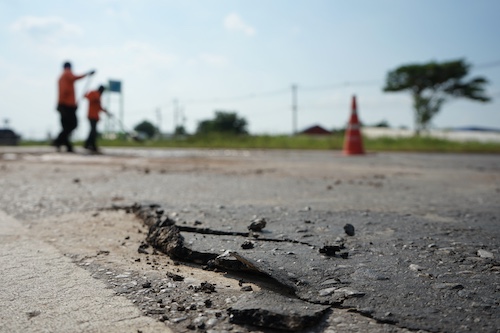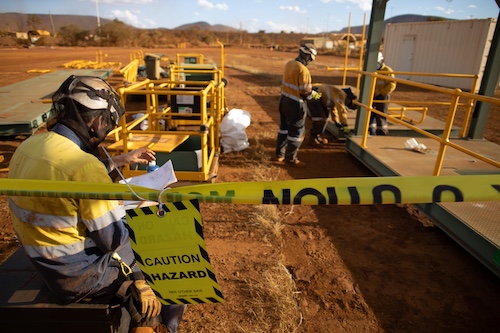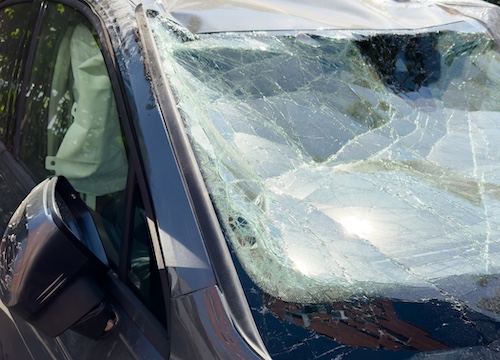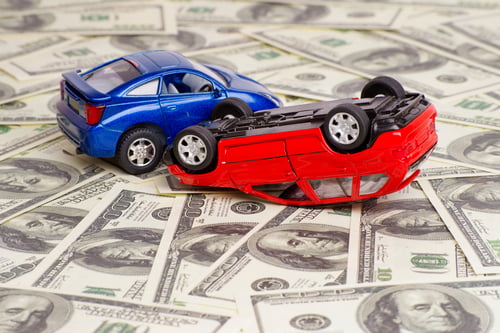Construction zones are common on Georgia roads, especially during peak highway construction seasons. These areas often involve lane shifts, reduced speed limits, and active construction equipment, making them high-risk zones for car accidents. When a crash happens in a work zone, many drivers wonder if the construction company can be held responsible. The answer depends on how the accident occurred and whether the company failed to follow safety rules.
In this blog, we explain the common causes of construction zone car accidents, when a construction company may be held liable, how fault is proven, and why working with an experienced Atlanta car accident lawyer is important for protecting your rights and pursuing fair compensation.
What Makes Construction Zones So Hazardous for Drivers?
Construction zones present many hazards for drivers. These areas often change normal traffic patterns and introduce new risks that can lead to serious accidents.
Confusing Lane Shifts and Pavement Markings
In construction zones, lane shifts are common. Drivers may be forced into narrower lanes or unfamiliar routes. Pavement markings are often faded, covered, or temporarily adjusted. This causes confusion and increases the risk of collisions. When lane markings are unclear, many drivers make sudden moves that result in rear end collisions or side-swipes.
Inadequate Warning Signs and Speed Limits
Warning signs help drivers understand upcoming changes. In some work zones, these signs are missing, blocked, or placed too close to the hazard. Without proper notice, drivers may not slow down in time. Reduced speed limits are also often ignored, especially if they are not clearly posted. Speeding in work zones is a major cause of serious injuries and fatal crashes.
Heavy Equipment and Construction Vehicles in Traffic Flow
Construction equipment and vehicles often move in and out of active traffic lanes. These large trucks and heavy machinery are slow and sometimes stop without warning. If workers fail to direct traffic properly, it can lead to dangerous situations. Drivers who do not keep a safe distance may crash into construction vehicles or other drivers reacting suddenly.
Distracted and Impatient Drivers
Many drivers do not stay alert in work zones. They use cell phones, eat, or become impatient with delays. Distracted driving in construction zones increases the risk of rear end collisions and lane departure accidents. Paying attention is critical where traffic changes quickly and workers are present near moving vehicles.
Lack of Space and Safe Distance
Work zones often reduce lane widths and shoulder areas. This leaves little room for error. When drivers follow too closely or try to pass, there is less space to avoid accidents. A small mistake can cause a serious crash when there is no safe distance or room to recover.
Unpredictable Behavior from Other Drivers
In construction zones, drivers often stop suddenly, merge without warning, or react poorly to obstacles. This behavior increases the chance of multi-vehicle crashes. Many work zone accidents happen because one driver makes a bad decision and others cannot respond in time.
Common Causes of Construction Zone Car Accidents
Construction zone car accidents often result from a mix of unsafe driving and poor work zone management. These are the most frequent causes seen on Georgia roads.
Distracted Driving
Many drivers do not pay attention in work zones. They check their cell phones, adjust GPS devices, or talk to passengers. In these areas, small distractions lead to big consequences. With lane shifts, road workers nearby, and unexpected stops, distraction often results in rear end collisions or sideswipes.
Speeding Through Work Zones
Speed limits are lower in construction areas for a reason. Drivers who ignore them put everyone at risk. Speeding makes it harder to stop in time, especially when traffic patterns change quickly. It also increases the force of impact in a crash, leading to more serious injuries and vehicle damage.
Poor Signage and Traffic Control
Construction companies are responsible for warning drivers. When signs are missing, unclear, or too close to the hazard, drivers cannot respond safely. In some cases, there are no flaggers or barriers in place. This lack of control often leads to sudden stops and unsafe merging, which causes many work zone crashes.
Unsafe Lane Shifts and Road Surface Conditions
Temporary lane shifts are often confusing. If pavement markings are not clear, drivers may swerve into the wrong lane or cut off others. Uneven road surfaces, loose gravel, and open trenches also increase the risk of losing control. These conditions are especially dangerous at night or in heavy traffic.
Construction Vehicles and Equipment in Active Lanes
Heavy equipment and large trucks often block or cross active lanes. When they enter traffic without enough warning, crashes happen. Many drivers do not expect construction vehicles to move slowly or stop suddenly. Work zones that lack proper spacing and buffer zones create more chances for collisions.
Driver Aggression and Impatience
Delays in construction zones cause frustration. Some drivers tailgate, change lanes without warning, or try to pass illegally. Aggressive driving in narrow or shifting lanes increases the risk of a crash. Impatient drivers often ignore warning signs and speed limits, putting themselves and others in danger.
When is the Construction Company Liable in a Georgia Car Accident?
In some construction zone car accidents, the construction company may be legally responsible for what happened. Liability depends on whether the company acted with reasonable care under Georgia law.
Failure to Provide Clear Warnings and Signs
Construction companies must place warning signs and barriers to alert drivers. If these are missing, damaged, or placed too close to the hazard, drivers may not have time to react. Poor communication about lane shifts, pavement markings, or upcoming road work can lead to confusion and crashes.
Unsafe Traffic Control and Lane Management
Construction zones require proper traffic control. This includes clear lane markings, visible signals, and safe detours. If a construction crew creates confusing traffic patterns or leaves lanes unmarked, they may be held liable. Georgia law requires all businesses to avoid creating unsafe conditions for the public. This is stated in O.C.G.A. § 51-1-2, which defines ordinary negligence as the failure to use reasonable care.
Hazardous Placement or Operation of Equipment
If construction equipment or vehicles are left in active traffic lanes without warning, the risk of a crash increases. Companies must ensure their heavy machinery does not block drivers or create blind spots. If a car accident happens due to poor placement or movement of equipment, the company could be held responsible.
Lack of Proper Lighting and Visibility
Work zones active at night must have proper lighting. If drivers cannot see lane shifts, construction workers, or stopped vehicles, the danger increases. Failing to provide adequate visibility may be considered negligence. This is especially true when the lack of lighting causes a serious injury or fatal crash.
Creating or Ignoring Road Hazards
Construction crews are expected to fix or mark dangerous road conditions. Loose gravel, uneven surfaces, or missing barriers can cause drivers to lose control. If a company leaves a hazard on the road without marking it clearly, and an accident happens, the company may be found liable.
No Effort to Protect Drivers and Workers
Construction companies are expected to protect both drivers and their workers. This includes using cones, flaggers, barriers, and clear signs. If they fail to create a safe work zone and an accident happens, they may be responsible for injuries, lost wages, and other damages.
Proving Fault in a Construction Zone Accident
To recover compensation after a construction zone car accident, the injured party must prove who caused the crash. This process involves collecting evidence and applying Georgia law.
Importance of Evidence from the Scene
The accident scene holds key information. Photos of lane markings, warning signs, construction equipment, and vehicle positions help show what happened. Statements from drivers, road workers, or other witnesses can confirm unsafe actions or conditions. Video footage from traffic or dash cameras may show how the accident started and who made the wrong move.
Role of Accident Reconstruction Experts
When the cause of a work zone car accident is not clear, attorneys often work with accident reconstructionists. These experts study tire marks, vehicle damage, and road layouts to understand how the crash happened. Their reports can support claims of driver negligence or unsafe construction practices.
Applying Georgia’s Comparative Fault Rule
Georgia follows a modified comparative fault system under O.C.G.A. § 51-12-33. If more than one party shares blame for the accident, each is assigned a percentage of fault. A driver who is less than 50 percent at fault may still recover damages, but their compensation is reduced by their share of fault. Proving fault accurately helps protect a victim’s right to fair compensation.
Identifying All Responsible Parties
Construction zone accidents often involve more than one party. A driver may be at fault for speeding or distracted driving. At the same time, a construction company may have failed to place proper warning signs. Subcontractors or public agencies may also share responsibility. Proving fault means identifying each party’s actions and showing how they caused or contributed to the crash.
Collecting Records and Official Reports
Police reports, project plans, and construction permits can provide helpful details. These records may show who was managing traffic, what equipment was in use, and whether the work zone followed safety rules. A car accident attorney can request these documents and use them to support your claim.
Contact an Experienced Atlanta Car Accident Attorney Today!
If you were injured in a construction zone car accident, our team at GMV Law Group is ready to help. We will review your case, identify all responsible parties, and fight for the full compensation you deserve.
Contact us at 404-975-4878 for a free consultation today!







